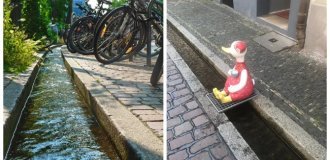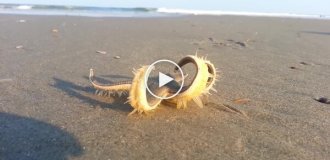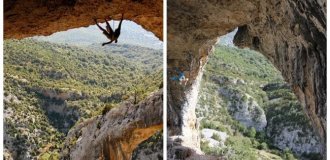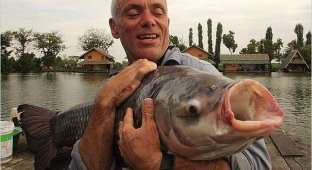When everyone was rich: the ancient city without streets Çatalhöyük (4 photos)
In 1958, archaeologists made a discovery that was as important as the discovery of Troy. In the valley of the Konya River in Turkey, the attention of researchers was attracted by an unusual place, which the locals called Çatalhöyük or “double hill”. The larger of the two hills was 17.5 m high and archaeologists hoped to find something interesting here. 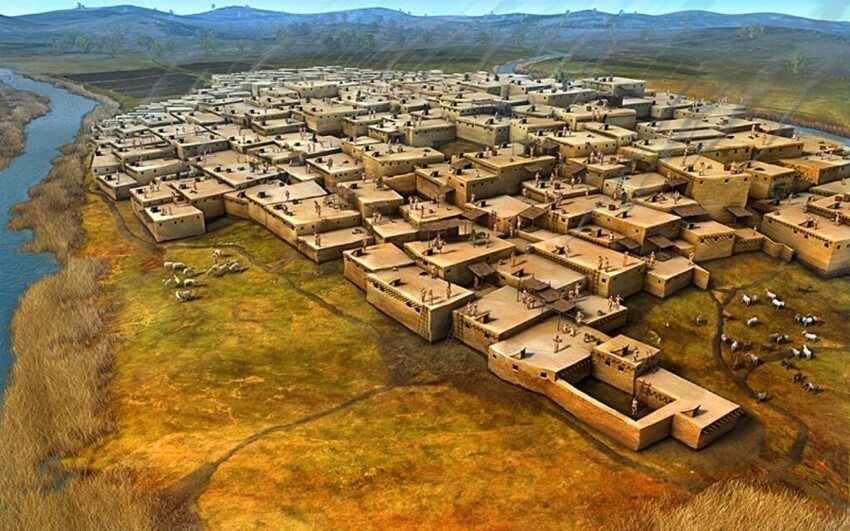
Ancient city of Catalhöyük
The discoveries made at Çatalhöyük exceeded our wildest expectations. Archaeologists have unearthed an ancient city, the age of which was dated between 6800-5800 BC. e. This age of the settlement seemed so unrealistic that its dating caused a wave of criticism of the radionuclide analysis method.
Typical houses of the ancient city
But be that as it may, archaeologists studied the discovery. As the researchers found out, in Çatalhöyük there were rectangular, one-story standard houses with an area of 25 m2, built from sun-dried bricks.
Inside each of these houses there were two rooms - a large one and a small one, which was used as a storage room. Inside each house there was a large clay ottoman. The buildings also had flat-top stoves and niches that served as kitchens. The floors were covered with carpets. 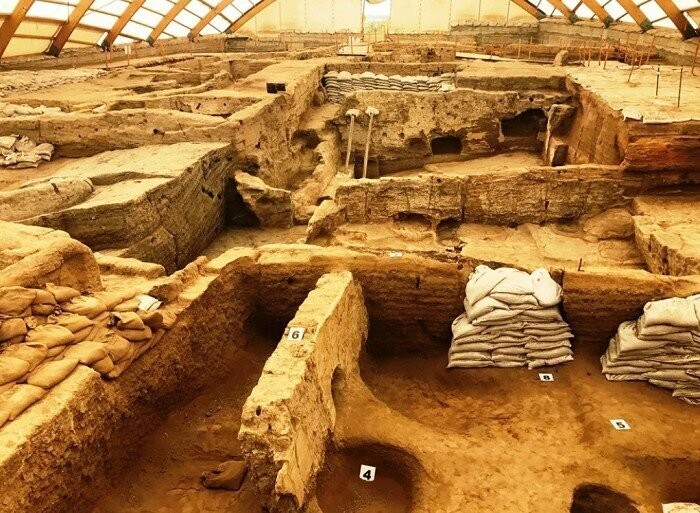
Houses in Çatalhöyük
City without streets
The houses in Çatalhöyük stood close to each other. That is, there were no streets in the city. Some space on the territory of the settlement was created by collapsed houses. However, residents used such places for dumping grounds.
The residents of Çatalhöyük moved along the roofs of their houses. All public life took place here. The townspeople descended into the buildings through holes made in the roofs along the stairs. 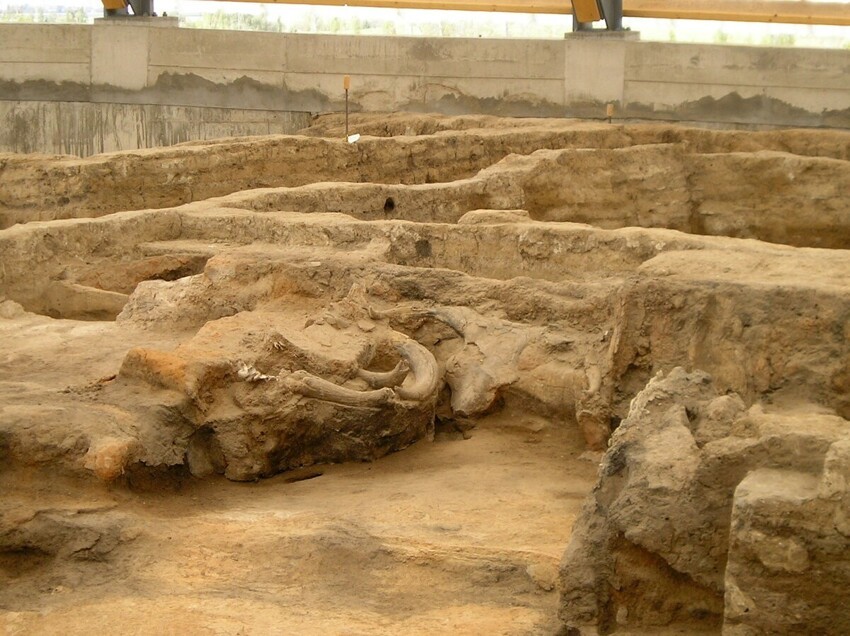
Catal Guyuk
Rich people of the ancient world
Several thousand years before our era, the division in human society into rich and poor had not yet occurred. And all residents of the city of Catal Guyuk had approximately the same income. As archaeologists managed to find out, they were quite rich.
About 5-6 thousand people lived in the city, which was a lot for that time. The life expectancy of the townspeople was also quite long.
The inhabitants of Çatalhöyük were mainly engaged in the cultivation of cereals. However, cattle breeding was also developed in the city. Residents kept goats that had long been domesticated by that time and still almost wild sheep. Every family had a cow.
The townspeople also went hunting, obtaining meat from wild boars, bears, and deer. On the territory of the settlement, archaeologists also found bones of fish and birds - vultures. Vegetables and fruits in the vicinity of the city, judging by the seeds found, grew in abundance. The inhabitants of Çatalhöyük made arrowheads and spearheads from volcanic glass.
Stone jewelry and temples
Materials used for the manufacture of jewelry, vessels, figurines were brought to the city from the Mediterranean coast. These were shells, marble, black limestone, etc. On the territory of Çatalhüyuk, archaeologists found a dagger, the handle of which was decorated by a master jeweler using the smallest “scales” by chipping. .
In addition to women's jewelry, mainly beads, archaeologists found in the city baskets with rouge, shells with some kind of creams and obsidian mirrors. 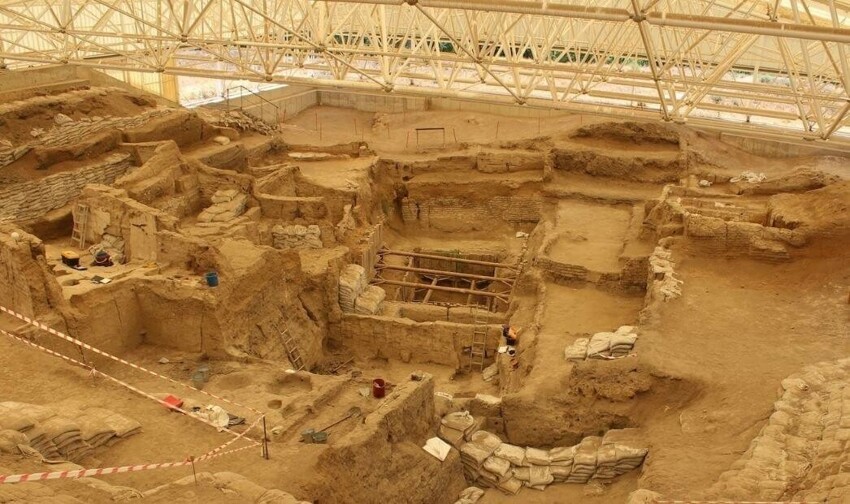
Ancient Çatalhöyük
Only women served in the beautiful temples of the city of Çatalhöyük. One of the most amazing discoveries made in the city’s religious buildings was the Star of Bethlehem, painted on the walls of one of the temples. Previously, archaeologists did not imagine that this symbol had such ancient roots.





